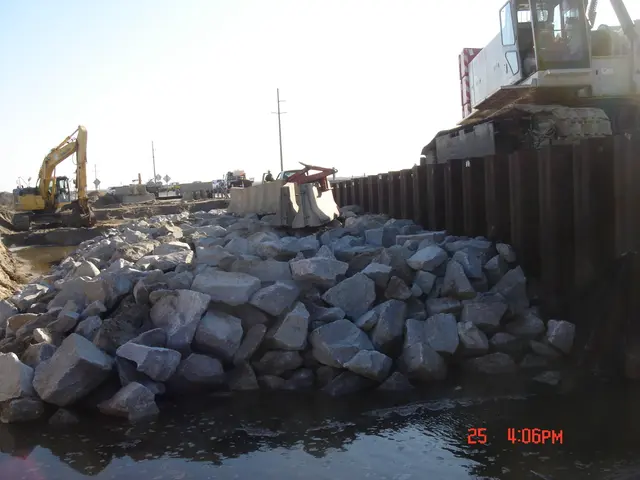Improving Soil Fertility and Boosting Plant Growth with Fish Fertilizer
In the world of organic gardening, fish-based fertilizers are making a splash. Derived from the by-products of the fishing industry, these eco-friendly products are reducing waste while enriching soil and promoting plant growth.
Fish fertilizers are a rich source of essential nutrients like nitrogen, phosphorus, and potassium. They also provide macro and micronutrients that plants need for robust growth. By adding seaweed fertilizer, compost, and molasses to fish fertilizer, you can introduce an array of minerals, enzymes, amino acids, and vitamins, elevating the nutrient profile of your soil.
The best practices for using fish-based fertilizers, such as fish emulsion or fish/seaweed blends, include diluting them according to label instructions to avoid nutrient burn. Apply them as a soil drench around the root zone or plant drip line every 1-3 weeks during active growth periods, especially spring through scape formation, then stop fertilizing 3-4 weeks before harvest for better storage quality.
Timing is crucial when using fish-based fertilizers. Apply them during the plants' active growth to maximize nutrient uptake and support vigorous development. For example, applying every 2-3 weeks from spring emergence until near harvest is recommended for crops. Applying on cool days or just before rain helps reduce odour and nutrient runoff.
Prefer fish/seaweed blends that provide not only major macronutrients (NPK) but also minor nutrients, amino acids, enzymes, and natural growth hormones to promote root development, microbial soil health, drought resistance, and natural stress tolerance in plants. Soil testing to identify nutrient deficiencies can help tailor fish fertilizer use. For container gardening or sensitive plants, begin with half-strength applications and observe plant response to adjust dose and frequency.
When used indoors, dilute fish emulsion more and apply less frequently due to odour concerns; ventilate the area when applying. Avoid overuse as excessive application can lead to nutrient runoff and waste. Fish fertilizers are generally mild but require consistent application to be effective.
Fish fertilizers slowly release nutrients without the risk of run-off into waterways, a problem often associated with synthetic fertilizers. Calcium, magnesium, and sulfur are essential minerals that can be added to the soil through specific organic amendments to ensure a balanced fertilization program.
Fish fertilizers are a natural product widely appreciated in organic gardening, offering a sustainable and eco-friendly alternative to synthetic fertilizers. They enhance the soil structure and contribute to the well-being of the garden's ecosystem, including earthworms, bees, and other pollinators.
Larry Meyers, a gardening expert with over 10 years of experience, aims to share his knowledge about gardening and create a one-stop shop for all gardening information and needs. He has written posts about when to plant tulips in Missouri, snail bait safe for dogs, and when to plant pumpkins in Michigan for Halloween, among other topics.
In summary, fish fertilizers are an organic option that improves plant growth and soil health. By following best practices, gardeners can reap the benefits of these eco-friendly products while reducing waste and promoting a sustainable gardening practice.






